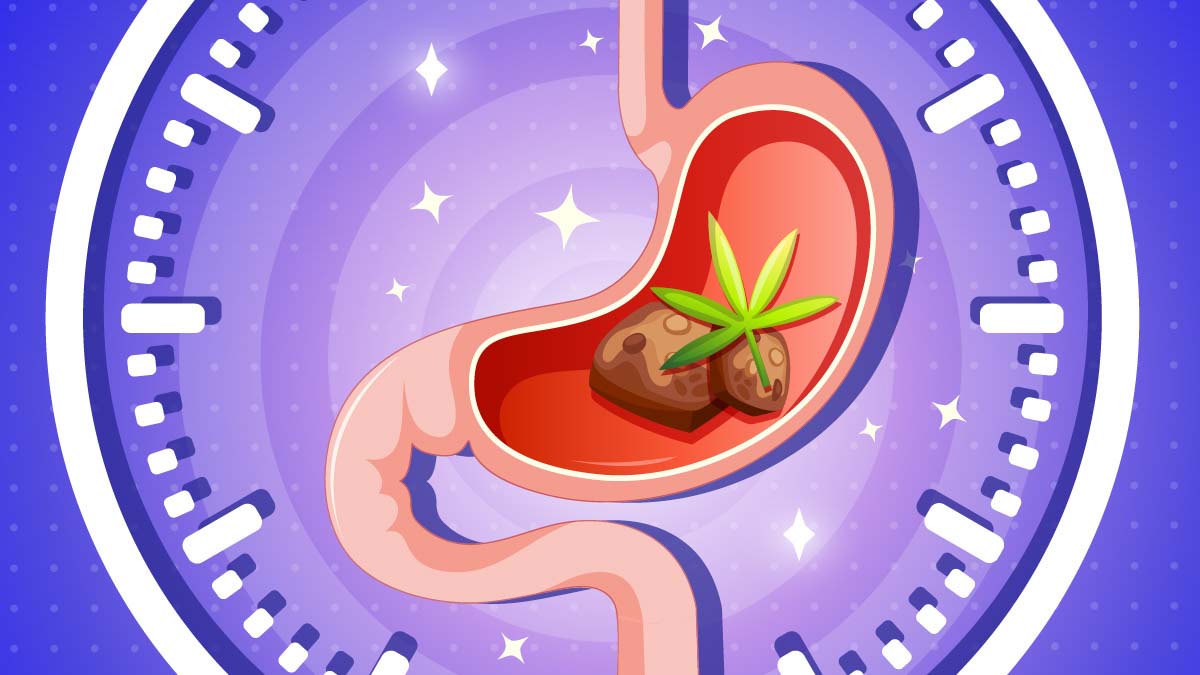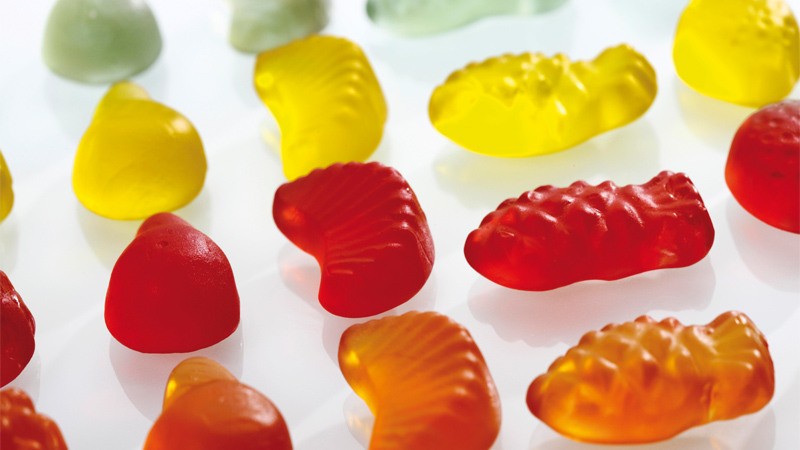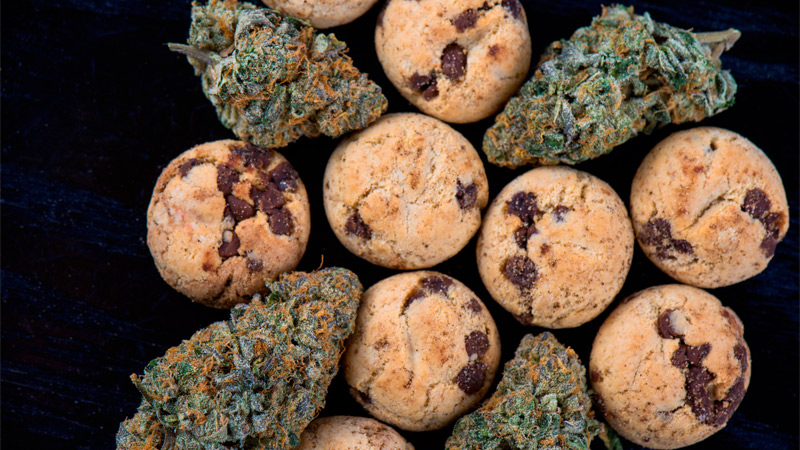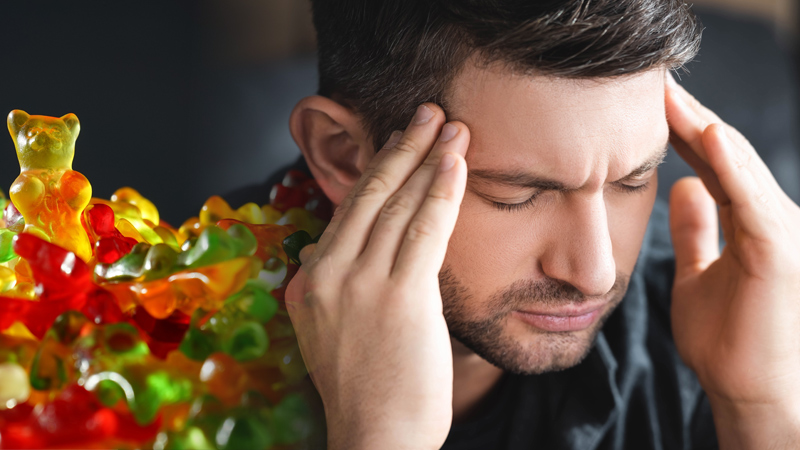How Long Do Edibles Stay in Your System?

How Long Do Edibles Stay in Your System?
How long THC stays in the system depends on your metabolism, frequency of use, and the strength of your edibles.
We’ll break down the subject bit by bit below. But first, here are the most important highlights of how long edibles stay in your system.
- The effects of cannabis edibles won’t last long in your system if you’re an occasional user.
- You can pass a urine drug test within 4-5 days if you use marijuana recreationally. Regular users, on the other hand, should abstain from weed for 30 days.
- Blood tests can detect THC in the blood for 1–2 days, although this number can be higher for heavy users.
- Saliva tests aren’t effective for edibles, but you shouldn’t eat anything weed-infused between 1 and 3 days.
- Hair can show traces of THC use for up to 90 days. If you have a hair follicle test anytime in the near future, it will probably give you a positive result.
- Edibles usually take longer to kick in — between 30 minutes and 2 hours — and last up to 8 hours, with higher doses being able to linger for 12 hours or more.
That said, let’s go into their nitty-gritty details.
How Long Does an Edible Stay In Your System?
THC from an edible can last anywhere from 3 days to as long as 90 days in your system. But, of course, the exact duration depends on several factors,
People with faster metabolism eliminate THC faster than those with slower metabolism.
The duration, frequency, and potency also matter, especially since THC can accumulate over time. THC levels tend to be higher in a person who:
- Consumes edibles with higher THC content
- Has consumed edibles for a more extended period
- Frequently consumes edibles
If you fit these criteria, then THC will stay longer in your system. It will also take you longer to flush them out.
The way you consume THC isn’t important. Whether you’re eating, vaping, or smoking marijuana, it’s basically metabolized in the same way. They’ll only differ in the onset of effect, which we’ll discuss later.
THC binds to your fat (adipose) cells and is stored there, so it stays in your body longer than most drugs do. The window for detection depends on what part of the body is being tested and how much you use on a general basis.
Here’s a short breakdown:
| Drug Test Type | When Is THC Detected? |
| Urine | 3-30 days |
| Blood | 1-2 days |
| Saliva | 1-3 days |
| Hair | Up to 90 days |
Edibles in Urine (3–30 Days)
Urine drug tests are the most popular way of drug screening, and unfortunately, there’s a pretty big detection window for them. If you’re an occasional user (no more than three times a week) or if it’s your first time with cannabis, THC will be detectable in your urine for 3 days after your most recent intake. If you use 4-5 times a week, the traces of THC will linger for 5-7 days after your last dose.
If you’re a daily user, THC from edibles will stay in your system for between 10 and 15 days.
Again, this detection window can extend if you use cannabis heavily, e.g. multiple times a day. If that’s you, THC will stay in your system for 30 days or even longer.
It’s simple: the more you use marijuana, the more it accumulates in your fat cells. It metabolizes at a steady pace, but if you consume more than your body can reduce, the amount stored will continuously increase.
Some studies even suggest that edibles may increase the time THC stays in your system. In one study, the researchers showed that the metabolite of THC was detectable for up to 6 days after eating two brownies with approximately 22.4 mg of THC (1). However, this was the most extreme case. The typical duration of THC was around 3-5 days.
Edibles in Blood (1–2 Days)
Blood drug tests have a much narrower detection window than urine tests because they use the most direct approach to test for THC.
Because of that, they’re typically used when people are looking for recent use of cannabis. THC will stay in the blood for 1 to 2 days after use. However, similar to a urine drug test, regular or heavy users will show traces of THC for up to 25 days.
If you eat a marijuana edible just once, you can rest assured that a blood test can only spot it for a day. Many sources claim it’s only detectable in blood for a few hours, but these results apply to the detection time of delta 8 and all the other types of THC. Its metabolites will linger in the blood for longer.
Still, you should be clear after two days after an edible.
Edibles in Saliva (1–3 Days)
Saliva can show traces of THC use for up to 3 days after smoking when it comes to occasional users.
Again, the situation gets worse for heavy users, in which case the saliva test may be able to detect THC for up to 29 days.
However, current evidence shows that edibles may complicate things (2).
For example, one study tested occasional users after a single dose of between 5 and 15 mg THC and found their results differed from people who only took a placebo. Higher doses — 20 to 25 mg of THC — reached their peak around 1 to 2 hours after the first application and then dropped after that.
To wrap it up, it’s best to play on the safe side and take 1–3 days as the detection window, regardless. However, saliva tests aren’t the best way to detect the use of edibles. There’s a chance that you won’t test positive after eating. Testing for metabolites would provide more accurate results, but these aren’t usually prioritized with saliva testing.
Edibles in Hair (Up to 90 Days)
THC from edibles will stay in your hair for around three months until your system flushes it. That being said, authorities rarely use hair drug testing because urine is easier to examine and indicates a more recent time period.
Despite its ability to detect THC in the system for up to 90 days, hair testing isn’t the most accurate approach. In one study, almost 50% of people who smoked weed in laboratory conditions had their hair test negative (3).
Hair follicle tests are more common for testing abstinence from drugs in clinical trials and similar environments.
The problem with cannabis in hair is that THC remains detectable even if you’re an occasional user.
How Long Does it Take for Edibles to Kick in?
Edibles pass through the digestive system first, so you may need to wait between 30 minutes and 2 hours before they kick in. The time can also vary between individuals, depending on a few factors such as:
- The type of edible and its strength
- Your metabolism and whether you took the edible on a full or empty stomach
Hard candies and gummies tend to hit faster, between 15 and 45 minutes. That’s because you suck some of their content when chewing them, and the cells in your mouth immediately absorb them.
Other types of edibles, such as cookies, brownies, or baked goods, can take 40 minutes to 2 hours to feel the effects. The digestive tract and the liver process them first before they enter the bloodstream. How quickly or slowly this happens depends on your metabolism.
THC consumed on an empty or full stomach also matters.
The psychoactive effect of THC edibles hits you faster and harder when taken on an empty stomach, about 20 to 30 minutes. THC goes through faster digestion and absorption processes. After all, there’s little food competing for digestion in the gut.
However, your body absorbs more THC when you eat them on a full stomach. That’s because the food you eat can act as a bolus vehicle and transport THC into the bloodstream more efficiently. Depending on your metabolism, you’ll feel it kick in anywhere from an hour to two hours.
Here, you should be extra cautious.
Why?
Because some people tend to take a second dose when they don’t feel the effects of the first one yet. What happens next is that these two doses overlap and, at some point, will accumulate in your bloodstream — intensifying the effects.
If you take weed edibles, you may get paranoid, anxious, and confused for a few hours, not to mention racing heart and general discomfort.
CBD edibles will leave you drowsy and tired if you take too many. While CBD won’t trigger anxiety and paranoia, you might find it difficult to focus throughout their duration.
”The onset and desired psychoactive effects of edible cannabis are greatly different from those of smoking cannabis,” cautions Adam Binneboese, M.D. Smoking THC gives you immediate results, so you can quickly stop if you feel you’ve had enough. This isn’t the same case for edibles, which take time to kick in.
“It is a good choice for new users to take a small conservative test dose or series of test doses to get acclimated to this new sphere of experience,” Dr. Binneboese continues. This approach helps you avoid the side effects of consuming too many THC edibles.
We also suggest waiting for about 6 hours after your first dose or taking a stronger dose the next day. This allows you to gauge how your body responds to the edible or measure how long CBD lasts in your system.
How Long Does an Edible High Last?
The effects of edibles last around 6 to 8 hours, but the ultimate duration depends on different individual factors, mainly the dosage and your tolerance to THC.
If you take a large dose, the effects can linger for up to 12 hours or even longer. On the other hand, users with higher tolerance or those taking lower doses might find the effects lasting as little as 4 hours.
The effects peak is reached about 3 hours after eating the edible.
Here’s a general dosage guide for beginners.
- 5 mg – low dose
- 10–15 mg – moderate dose
- 20+ mg – high dose
If this is your first time taking edibles and you’re not experienced with cannabis in general, it’s better to take a 5 mg dose and then try 10–15 mg the day after if you don’t feel anything.
How you consume edibles will, again, also matter.
Consuming edibles on an empty stomach may give you a rapid high. But the fast digestive process also means short-lived effects, with THC concentration peaking at about an hour.
It may take longer to feel the effects when consumed on a full stomach. But you can also expect the high to last longer. THC concentration peaks after about two hours or longer.
Your body doesn’t absorb all the THC you consume. You’re already losing some of THC’s bioavailability as it travels down your gut to the liver. Bioavailability refers to the fraction of the drug the body absorbs, goes into the bloodstream, and elicits an effect.
THC (and other cannabinoids, for that matter) are lipophilic. Meaning they love and readily bind to fat. But our cell is 70% water, making it a bit harder for THC to enter.
This is where bolus vehicles come in. They act as “vehicles” that carry THC into the bloodstream (5). Cannabinoids emulsify or “combine” with these foods. The carrier then transports them into the bloodstream easily.
If you want the effects to linger, then consume edibles with good fatty foods like whole eggs, nuts, sesame oil, and chia seeds.
Can You Overdose on Edibles and Treatment
Whether you tried to test your limits or somebody just gave you a 50 mg edible without informing you about its potency, an overdose can happen.
Yes, it can feel scary. You may experience anxiety, paranoia, racing heart, and a drop in blood sugar — which may cause you to feel weak.
But it’s normal — and not dangerous to your life.
There’s nothing you can do to instantly reduce the high or speed up the sobering process. But you can do several things to help yourself feel better when you have too big a dose of edibles.
Below are some of the best practices for coming off of the buzz:
Keep an Open Mind
An open consciousness is the best mindset during a marijuana high, allowing you to fully embrace and enjoy the experience. More importantly, an open and relaxed mind may help reduce the ugly effects of a bad high like paranoia and anxiety.
Remember, weed can enhance your emotions, and biased expectations can affect your overall experience.
Keep Calm
Remember that nothing wrong is happening to you physically.
First and foremost, remind yourself that you’re going to be well the next day. That is, of course, unless you’ve taken a huge dose (e.g. over 100 mg). We’ve read stories of people being high on edibles for 48 hours, but such scenarios are extremely rare and involve gigantic quantities.
Find a Safe Place
Seek comfort with friends and find a safe place to calm down. Since your options for sobering up are limited, you can find a place to ride it out. Talk to your friends and ask them if they’ve ever had a similar experience. They can calm you down and take you to a place where you know you feel comfortable. Stick around those people until you feel better.
If nothing else helps, try to take a nap and sleep it out.
Have a Hearty Meal
Food will still taste like heaven, so if you feel uncomfortable after taking a large dose of THC, indulge in your favorite meal. Doing so will slow down the metabolism of THC, reducing the intensity of your high. The effects will last longer, but they won’t be as edgy as if you didn’t eat anything afterward.
You can also try other tricks, such as chewing a few black peppercorns, which will release a calming terpene beta-caryophyllene. Nevertheless, the best practice is to wait until the high wears off. You’ll be fine and have one more funny story to share with your friends.
Are There “Milder” Marijuana Edibles for Beginners?
Most edibles come infused with delta-9 THC (also simply called THC), which gets you high. However, some also use different cannabinoids such as Delta-8 THC and CBD. The former produces a mild high, while the latter doesn’t get you high at all.
A minor cannabinoid, Delta-8 THC comes from THC’s degradation. Both THCs have an almost similar structure. Their only difference is the location of their double bonds, which may affect their psychoactive effects.
Delta-8 has its double bond on the eighth carbon chain, while THC has it on the ninth (4). This difference may account for Delta-8’s milder and smoother high. It may also be why Delta-8 has fewer side effects than THC.
CBD edibles won’t get you high, of course. This type of edible delivers the therapeutic benefits of cannabis without the buzz.
The main active ingredient will always be shown on the label, so always check before buying.
Precautions in Consuming Cannabis Edibles
We’re consuming edibles not just for recreational use but for symptom relief as well. While CBD edibles don’t pose any tolerance or cannabis addiction risks, we can’t say the same for edibles with high THC or Delta-8 THC content. We must remember that these can also come with some serious side effects, warns Dr. Binneboese.
- Food products containing high THC doses can cause paranoia and anxiety.
- They increase tolerance risks. You’ll need a higher dose to feel the same effects. This then makes it harder for your body to flush them out.
- They’re habit-forming. The more you consume THC edible, the more you may become dependent on them. This, of course, increases marijuana addiction risk.
If you have a history of substance abuse, THC-containing products and edibles may not be a good choice for you.
Final Verdict: How Long Do Edibles Stay in Your System?
To sum up, edibles stay in your system longer than you would hope, but unless you’re a heavy cannabis user, you should be clear in 5 days.
Regular marijuana users don’t have many options for flushing THC out of their system, so if you know of an upcoming drug test, it’s best to abstain from edibles — and cannabis products in general — so that you don’t fall into the detection window.
If you use cannabis multiple times a day and have a urine test soon, you’d likely need 30 days or more before you’re clear. A blood and saliva test shouldn’t be able to detect traces of THC in your body after a few days, but if it’s a hair follicle test, its metabolites may show up for 90 days since your last use.
Regardless of the time edibles stay in your system, always be responsible and start with a low dosage — slowly increasing the amount of THC up to the sweet spot.
Sources:
- Cone, E. J., Johnson, R. E., Paul, B. D., Mell, L. D., & Mitchell, J. (1988). Marijuana-laced brownies: behavioral effects, physiologic effects, and urinalysis in humans following ingestion. Journal of Analytical Toxicology, 12(4), 169–175. [1]
- Gryczynski, J., Schwartz, R. P., Mitchell, S. G., O’Grady, K. E., & Ondersma, S. J. (2014). Hair drug testing results and self-reported drug use among primary care patients with moderate-risk illicit drug use. Drug and alcohol dependence, 141, 44–50. [2]
- Huestis, M. A. (2007). Human Cannabinoid Pharmacokinetics. Chemistry & Biodiversity, 4(8), 1770–1804. [3]
- Kruger, J. S., & Kruger, D. J. (2022). Delta-8-THC: Delta-9-THC’s nicer younger sibling? Journal of Cannabis Research, 4(1). [4]
- Lee, D., & Huestis, M. A. (2014). Current knowledge on cannabinoids in oral fluid. Drug testing and analysis, 6(1-2), 88–111. [5]
Related: Do Edibles Go Bad?